
Blog, Heel Pain
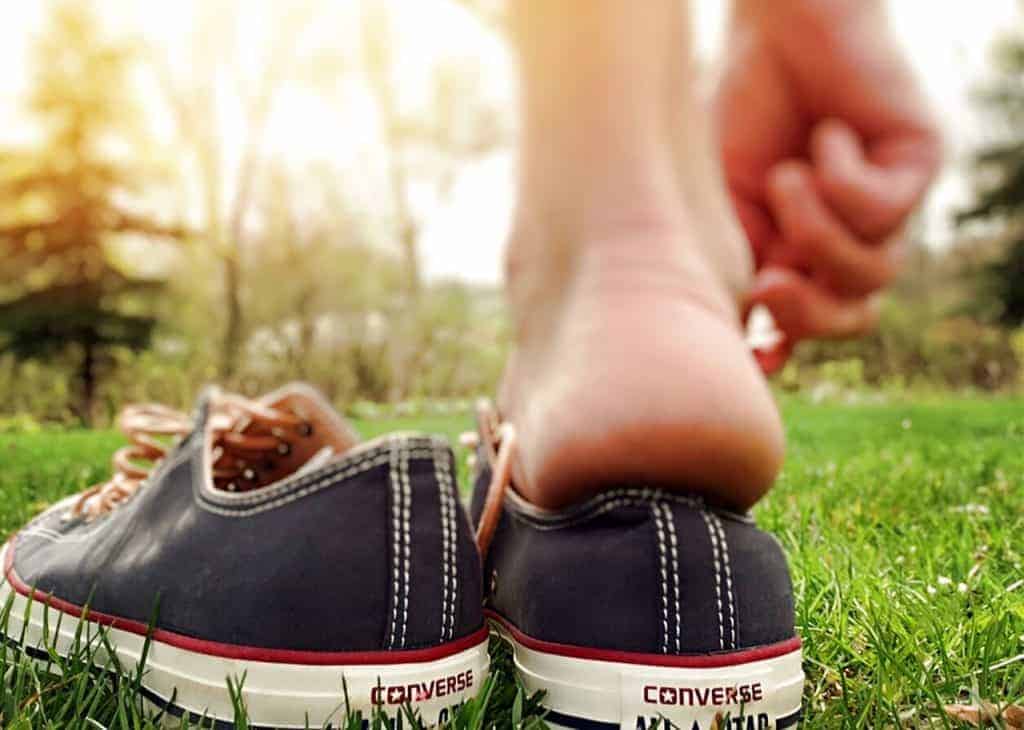
Think you have a heel spur? Think again
There’s a myriad mystery and misinformation about heel spurs. Just the thought alone of having a hard protruding growth on the bottom of the heel is more than a little alarming — but really, it needn’t be.
What is a heel spur?
“A heel spur is a small bony growth at the underside of the heel bone. People call it a spur or a calcification. We might also call it an exostosis (a benign outgrowth of cartilaginous tissue),” explains sports podiatrist and founder of A Step Ahead Foot + Ankle Care Dr Brenden Brown.
“Heel spurs are incredibly common. I see it in about 40-50% of the x-rays I perform. “However, the vast majority of people with heel spurs experience NO PAIN whatsoever.
“In all of the time I have been a podiatrist (which is 20 plus years) I have seen two symptomatic heel spurs. I’ve seen lots of heel spurs but only two that have ever presented with associated pain.
“So if we talk about the signs of symptoms of heel spurs there aren’t really any apart from having a large bony or hard nodule on the underside of the heel pad that doesn’t feel the same as the other foot and cannot be depressed (pushed or squashed).
“99% of people who come to me saying they have pain from a heel spur do not have pain as a result of a spur.
“A heel spur won’t bother you unless it’s prominent beneath your foot and the orientation of the spur is angled more towards the ground; this could cause some pain and discomfort. However, I’ve read about these types of spurs but I’ve never even seen one. Not in 20 years of practicing.”
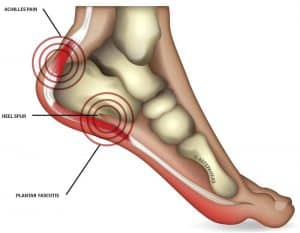
5 heel spur facts
- Your pain is most likely not caused by a heel spur
The vast array of people with heel spurs have NEVER HAD A DAY OF PAIN in their life
- Heel spur pain doesn’t come and go like a yo-yo
In those very rare cases where people do have a heel spur that’s causing them pain—the pain doesn’t come and go.
“If you have a friend who tells you they had a heel spur and the pain went away you have to ask yourself ‘where did that pain go?’ The pain of a heel spur isn’t like the cast of Neighbours – it doesn’t travel from Melbourne to Queensland to get a job and never return!”
- Silica won’t cure a heel spur
“People have told me they took silica and it miraculously dissolves their spur. I have to ask these patients ‘how on earth did the silica dissolve your bony spur but manage to leave the rest of the foot in tact. How did it not also dissolve the frontal lobe of your skull?”
- No operation needed
Even if you do have a heel spur, which most of the time is an incidental finding on an x-ray, you don’t need an operation to remove it.
- Cortisone won’t help your heel pain
For most people cortisone is useless in treating heel pain. In fact, studies have shown that after three months 56% of people who were having cortisone injections for their heel pain had zero reduction in pain.
If it’s not a heel spur — what is causing my pain?
Heel pain can be caused by a variety of other reasons including: plantar fasciitis, plantar fasciosis, abductor hallucis strain or tibialis posterior tendinosis.
If you are suffering from heel pain, be sure to visit your local podiatrist but don’t be fooled into automatically thinking that it’s a heel spur—it’s highly likely that it’s not!
Related articles:
10 things you should know about heel pain
A Step Ahead Foot + Ankle Care is one of Sydney’s leading foot and ankle clinics. Principal podiatrist and founder of A Step Ahead Dr Brenden Brown (AKA Dr Foot) has been taking care of people’s feet for more than 20 years.
With a background in sports medicine and having served as a former president of the Australasian Podiatry Council, Brenden is a wealth of information when it comes to foot and ankle care.
Got a question? Check out our Instagram profile #AskDrFoot
Or, tune into our Facebook page for regular live videos and updates on the latest foot and ankle advice from the experts.

Blog, Kids Feet, Uncategorized

Taking care of common kids’ foot complaints
While most parents worry about the health of their child’s eyes and teeth, many overlook the state of their kids’ feet. Feet are amazing; not only do they enable us to stand tall and move, they support our body weight and act as shock absorbers, in turn protecting our ankles, knees, hips and spine.
In young children the foot is pliable to allow it to develop, which means taking care of feet during the first few years of a child’s life is vital.
Recognising common foot complaints can help ensure that action is taken to address the problem and ensure your child’s feet continue to develop in a healthy way.

Ingrown toenails
Ingrown toenails are common with multiple causes. Widespread causes can include clipping the nails too short, cutting or picking at the edges of the nail, trauma to the nail due to kicking sports, excessively sweaty feet and pressure from footwear. All of these events can create a sharp edge on the nail, which can pierce the skin and lead to an ingrown toenail.
The symptoms of an ingrown toenail (onychocrytosis) can include a sore toe, pain at one side of the toenail and, in severe cases, a pus-filled discharge. In most cases it’s usually the big toe that’s affected.
Closed-toe shoes are likely to increase the intensity of the pain and, if left untreated, it’s common for the toenail to become infected making it difficult to walk and particularly painful to play sport.
To treat an ingrown toenail start by soaking the foot daily in warm, salty water, gently patting dry and applying a topical antiseptic. If possible, refrain from wearing enclosed shoes.
If the issue does not resolve within a couple of days it may require treatment by a podiatrist. This is a simple procedure that involves removing the small, sharp portion of nail causing the grief and dressing the nail to protect against infection. It usually takes minutes.
In acute cases nail surgery may be required.

Flat feet
In infants flat feet is common because they have a fat pad under the foot that hides the developing arch. By about the age of eight, the foot arch becomes apparent. Yet some children never develop an arch and this is called ‘flat feet’.
Flat feet or pronated feet (foot and ankle roll inwards) can be hereditary or due to muscle length and tone. In some instances the condition causes no pain or discomfort but in other cases flat feet or over pronated feet can cause pain in multiple areas of the body including the foot itself, shins, knees, lower back and Achilles tendons.
A podiatrist can help treat flat feet using orthotics, which hold the feet in their correct position and help relieve the associated pain. A detailed biomechanical analysis is conducted to diagnose which type of orthotics is best (there are many!).
In addition to orthotics, a podiatrist can advise on other measures that can be taken as part of a multi-pronged treatment plan. This may include stretching, strengthening exercises or deep connective tissue massage. Bare in mind that being overweight or wearing poor footwear can contribute to the symptoms of flat feet.
Plantar warts
Warts can be the bane of a parent’s life because they are so easy to contract, yet notoriously difficult to get rid of.
Often mistaken for corns, plantar warts appear as small (less than 5mm) rough, flat bumps on the bottom of the foot—usually on the underside of the toes, heel or forefoot. Some plantar warts have little black dots in the centre. This is caused by small blood vessels.
Warts are the result of a virus, so they are easily transferred to other children and adults and are particularly common in swimming pools, gyms, communal showers and other places that involve water, warmth and bare feet.
There’s a plethora of treatments for plantar warts but many are lengthy and not always successful. If over-the-counter non-prescription medicines don’t work, you can try a prescription medication such as salicylic acid or cryotherapy, which involves freezing the wart with liquid nitrogen.
Alternatively, your local podiatrist can use laser treatment or a small instrument to remove the wart. To prevent future plantar warts, avoid letting your child go barefoot in high-risk places such as public showers and outdoor swimming pools.
Want to know more about taking care of kids’ feet? Visit: mykidsfootdoctor.com.au.
Got a question? Ask Dr Foot
A Step Ahead Foot + Ankle Care is one of Sydney’s leading foot and ankle clinics. Principal podiatrist and founder of A Step Ahead Dr Brenden Brown (AKA Dr Foot) has been taking care of people’s feet for more than 20 years. With a background in sports medicine and having served as a former president of the Australasian Podiatry Council, Brenden is a wealth of information when it comes to foot and ankle care.
Related blogs:
Does your child need to see a podiatrist?
Are growing pains causing your child discomfort?
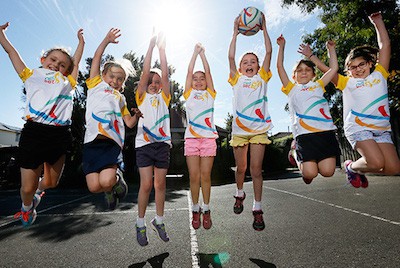
Blog, Sports Care

Your guide to choosing the best netball shoe
“The days of calling netball a non-contact sport are well and truly over,” says sports podiatrist and founder of A Step Ahead Foot + Ankle Care Dr Brenden Brown.
He says netball is not only physically demanding, it’s a high-impact sport in which foot and ankle injuries are rife (particularly if players aren’t wearing appropriate footwear!).
Do players really need new netball shoes every season?
Short answer is, ‘Yes, they do!’
“Netball involves lots of twisting on one foot, side to side motion, jumping and running—as a consequence, many players get ankle sprains. Having a new pair of shoes at the beginning of netball season is essential. It’s an injury-prevention no-brainer!
“Good quality netball shoes go a long way to assisting with injury prevention. I witness this time and time again…I’m a netball Dad and when I see a child on the sideline with an injury, it’s universally in a poor shoe,” says Dr Brenden.
Regular runners vs netball shoes: what’s the difference?
Mark Doherty, ASICS general manager of product, knows a thing or two when it comes to sports shoes. He explains that the sole of a netball shoe is a lot different to that of a running shoe.
“We tend to use solid rubber in the soles of our netball shoes, whereas in a running shoe we use blown rubber which is an air injected rubber.
“While we want netball shoes to be lighter and lighter, we also need to make sure they last and offer the wearer the protection they require.
“Solid rubber has the ability to wrap around the shoe and it also stabilises the shoe so that when you go into cross-lateral movements there’s the solid platform you need.
“If you were wearing a running shoe, the shoe could potentially collapse on the lateral sides because of the movement involved in netball.”

What makes a great netball shoe?
“When choosing a netball shoe consider cushioning, stability, support and weight (you want it to be lightweight). A firm heel counter is important and there should be minimal twisting or ringing out of the shoe,” says Dr Brenden.
“An adequate toe box is essential too. Make sure the shoe is comfortable and roomy enough around the toes when you first try it on; these shoes are NOT designed to stretch.”
Mark says the basic principle is that a netball shoe should have a more stable base than a running shoe, but it’s also important to consider durability and performance of the shoe to last longer.

Are new designs just marketing hype?
“We have a couple of top shoe models that we change every two to three years, based on the latest technology. This might allow us to make the shoe lighter, more durable or more flexible,” says Mark.
“For 2018 ASICS’s introduced the new Netburner Professional with an updated midsole foam that’s much lighter than any foam we’ve ever developed before.
“The Professional has more of a running-type feel to the shoe with the added bonus of that extra protection that’s needed in a netball shoe.”

Final note: It pays to get professional advice when choosing a netball shoe.
“When you’re buying a sports-specific shoe, it’s a great idea to get professional advice.
“If you’re someone with a really high arch and you select a shoe that’s designed for someone with a low arch you are VERY likely to increase your risk of injury,” says Dr Brenden.
“Shoes differ from season to season—for example the Netburner Professional has a new, more flexible, upper material this year—which can change the feel of the shoe.
“But also, a shoe is like a fingerprint; because of the amount of manual labour involved, no two shoes are the same,” says Mark.
“Even if you pull out two size eights in the same shoe, there can be slight differences because of the tolerances you have in midsole density or the upper might be slightly different. It’s always best to try on shoes to allow for these minor differences.”
A Step Ahead Foot + Ankle Care is one of Sydney’s leading foot and ankle clinics. Principal podiatrist and founder of A Step Ahead Dr Brenden Brown (AKA Dr Foot) has been taking care of people’s feet for more than 20 years.
With a background in sports medicine and having served as a former president of the Australasian Podiatry Council, Brenden is a wealth of information when it comes to foot and ankle care.
Got a foot-related question? AskDrFoot

Blog

Your guide to rock-solid ankle stability
Your feet and ankles are the foundation of your body so imagine the persistent feeling that your ankle is going to “give away” or actually having your ankle collapse under the weight of your body? Ouch!
Sports podiatrist and founder of A Step Ahead Foot + Ankle Care Dr Brenden Brown explains, “Ankle instability is that uneasy feeling that your ankle is going to roll out, particularly when walking or running on rough surfaces.
“We tend to think of these ‘rough’ surfaces as being a rocky terrain or very unsteady ground but for someone who has had a previous ankle sprain, a rough surface can simply be a bump in a soccer field.”

So what are some key points about ankle instability?
- Having an ankle sprain increases the chance of another ankle sprain
- Those people who have an ankle sprain but don’t undergo physical therapy and rehabilitation are significantly more likely to re-sprain
- Repeated spraining or injury to the ankle can lead to chronic ankle instability (this can seriously effect quality of life)
- In fact, 33% of people with first time ankle sprains go on to develop chronic ankle instability.
- You can’t cure ankle instability by doing nothing. Evidence suggests it’s very unlikely it will get better by itself.
- Stopping exercise or playing sports won’t alleviate ankle instability but could cause other negative health impacts.
While many people underestimate the impact of ankle instability and simply don’t pay their ankles the attention they deserve, other causes include hyper-mobility (being double jointed), a very high foot arch and weak muscular control in a single leg.
Treating ankle instability
“When it comes to treatment, it’s important to note that it’s not just about the ankle – you need to consider the whole limb,” says Dr Brenden.
“Unfortunately, there’s also the common misconception amongst many health professionals that a single style of treatment will make ALL ankle sprains better. This isn’t so; treatment should be tailored to the type of sprain.
“Similarly, there’s the misunderstanding that wearing an ankle brace or taping the ankle will prevent ankle instability. Not so.
“We’re finding that the entire leg, in particular the glutes and all the muscles above the ankle are more vital than we ever thought before.
“If you have weak glutes or poor hip function on your left hand side you’re significantly more likely to twist your left ankle.”
Aside from just focusing on the ankle itself, Dr Brenden says there’s a growing body of evidence to support strength work through exercise.
This involves firstly identifying where the muscle imbalance is coming from and then performing targeted strength exercises.
“I have a real problem with healthcare practitioners who only ever tell people with ankle instability to do calf raises. If you’re a tennis player, calf raises are inappropriate because you’re jumping side to side rather than raising the feet up and down.
“Rehabilitation exercises need to be specific to the sport you play. You can’t take a ‘one-size-fits-all’ approach.”
Other methods of treatment include:
Footwear— A firm base and firm heel counter (we’re talking good quality trainers) is important while the ankle is unstable.
Orthotics—There’s a sound body of evidence that suggests looking at foot posture can be helpful. Over use of the muscles can affect the way the foot moves and, if left untreated, this can lead to ankle instability.
“The vast problem is that people delay treatment and end up having multiple ankle sprains, which not only damages the anterior talofibular ligament (ATFL) but the surrounding muscles as well.”
Ultimately, poor ankle stability can lead to a chain reaction of injury so it’s important to talk to your local podiatrist to find out the best method of action.
A Step Ahead Foot + Ankle Care is one of Sydney’s leading foot and ankle clinics. Principal podiatrist and founder of A Step Ahead Dr Brenden Brown (AKA Dr Foot) has been taking care of people’s feet for more than 20 years. With a background in sports medicine and having served as a former president of the Australasian Podiatry Council, Brenden is a wealth of information when it comes to foot and ankle care.
Find out more about ankle sprains and how to treat them
Got a question? Check out our Instagram profile #AskDrFoot
Or simply tune into our Facebook page for regular live videos and updates on the latest foot and ankle advice from the experts.

Blog, Heel Pain, Shockwave, Sports Care


















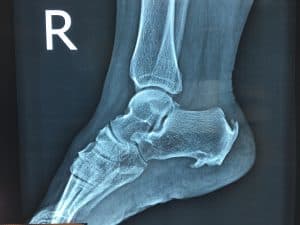
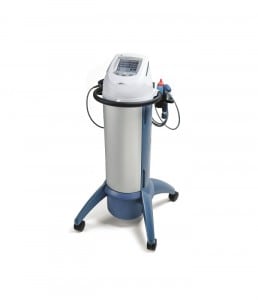





 Dr Brenden’s White paper report on the “6 Reasons You Won’t Beat Heal Pain” outlines what’s stopping you from beating this and tips on how to stop it in its tracks!
Dr Brenden’s White paper report on the “6 Reasons You Won’t Beat Heal Pain” outlines what’s stopping you from beating this and tips on how to stop it in its tracks!